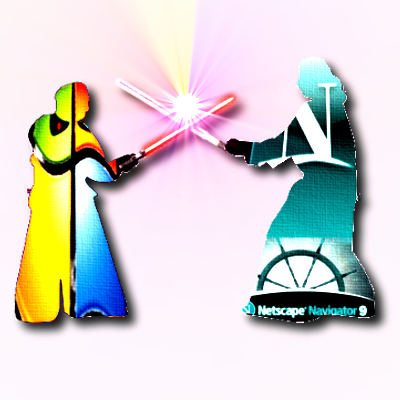 The First Browsers
The First Browsers
Browsers began to be taken seriously around 1993 . The first were the Unix browsers such as Line Mode Browser, ViolaWWW, Erwise and MidasWWW, and MacWWW/Samba for the Mac. In a short span there were more like Cello,Arena,Lynx,tkWWW and Mosaic. The most popular was Mosaic. It was designed by National Center for Supercomputing Applications(NCSA) to run on multiplatforms.
Marc Andreessen, a founding developer of Mosaic, started his own Mosaic Communications Corporation and his first product was Mosaic Netscape. The company was renamed Netscape Communications Corporation and the browser Netscape Navigator. The Netscape browser was much better interfaced and reliable than other browsers of that time but the best thing was it was free.
Corporates soon recognized this as a new market and many more IT companies jumped in like Browse, IBM’s Navipress, SlipKnot, Web Explorer, UdiWWW, Omni Web, Web Rouser, Mac Web . And then one day Bill Gates took notice of Netscape and soon Microsoft introduced it’s own Internet Explorer 1.0.
The Browser Wars
By 1995 Netscape Navigator in only about a year was more than 80 % of the web browser market. Microsoft released Internet Explorer 1.0 with licenses from NCSA’s Mosaic on its Windows 95 Plus! Pack in August. Some time later Netscape was free only for educational institutes and non profit organizations while Internet Explorer 2.0 was released as a free download. Everybody realized how competitive the new market had become and started to provide free installation with new updates appearing regularly at a rapid pace
On October 1997, when Internet Explorer 4.0 was to be released, Microsoft had a 10 feet “e” logo put on the lawns of Netscape office with a sign “From the IE team … We Love You”. Netscape responded by knocking it down and setting their Mozilla dinosaur mascot on top of it , with a sign reading “Netscape 72, Microsoft 18” representing the market distribution.
Internet Explorer 4 was a turning point. It was introduced as a part of Windows to exploit the already dominant personal computer market of Microsoft. IE 4 was free and already there with Windows and thus no need for users to get another browser.
The U.S. Government soon took notice of this and was concerned because Microsoft had already had some trouble over monopoly rules in the past. Microsoft defense was that Internet Explorer was not a separate product but an upgrading feature for Windows, although the IE was part of the Plus! Pack which was sold separately from Windows 95. Microsoft in its reports said that the government, under influence from its competitors, was trying to constrain the Windows business.
The Trial – Part 1
On May 18, 1998 the U.S. Justice Department and the Attorneys General of twenty U.S. states sued Microsoft for illegally obstructing competition in order to protect and extend its software monopoly and for violating a 1994 consent decree by forcing computer makers to include its Internet browser as a part of the installation of Windows software.
Bill Gates himself was brought to trial. But his attitude was reported to be “evasive and non-responsive” and saying ‘I don’t recall’ so many times that the judges got irritated. Intel Vice-President Steven McGeady, called as a witness, quoted Paul Maritz the senior Microsoft Vice-President as to “extinguish” and “smother” rival Netscape Communications Corporation and to “cut off Netscape’s air supply” by providing Netscape Navigator’s clone for free.
To prove that IE 4 was an upgrading feature of Windows, Microsoft provided videotapes that demonstrated that removing IE 4 from Windows caused slowdowns and malfunctions. Interestingly Microsoft Vice-President James Allchin had stated the video to be a seamless segment filmed on one PC, but the prosecutors found some icons mysteriously disappear and reappear on the PC’s desktop, and thus claimed it to be a fake. Allchin confessed and blamed his staff, “They ended up filming it – grabbing the wrong screen shot,” he said. Microsoft had to drop the the claim that removing IE slowed Windows and got irritated by the lawyers’ “nitpicking on issues like video production”. Microsoft submitted a second videotape to demonstrate how easy it was for America Online users to download and install Netscape Navigator onto a Windows PC. Microsoft’s video showed the process as being quick and easy with the Netscape icon appearing on the user’s desktop. The government produced its own videotape of the same process, revealing that Microsoft’s videotape had conveniently removed a long and complex part of the procedure and that the Netscape icon was not placed on the desktop, requiring a user to search for it. Brad Chase, a Microsoft Vice-President, verified the government’s tape and conceded that Microsoft’s own tape was falsified.
Continued in the next part
Author- Soumendra Barik
